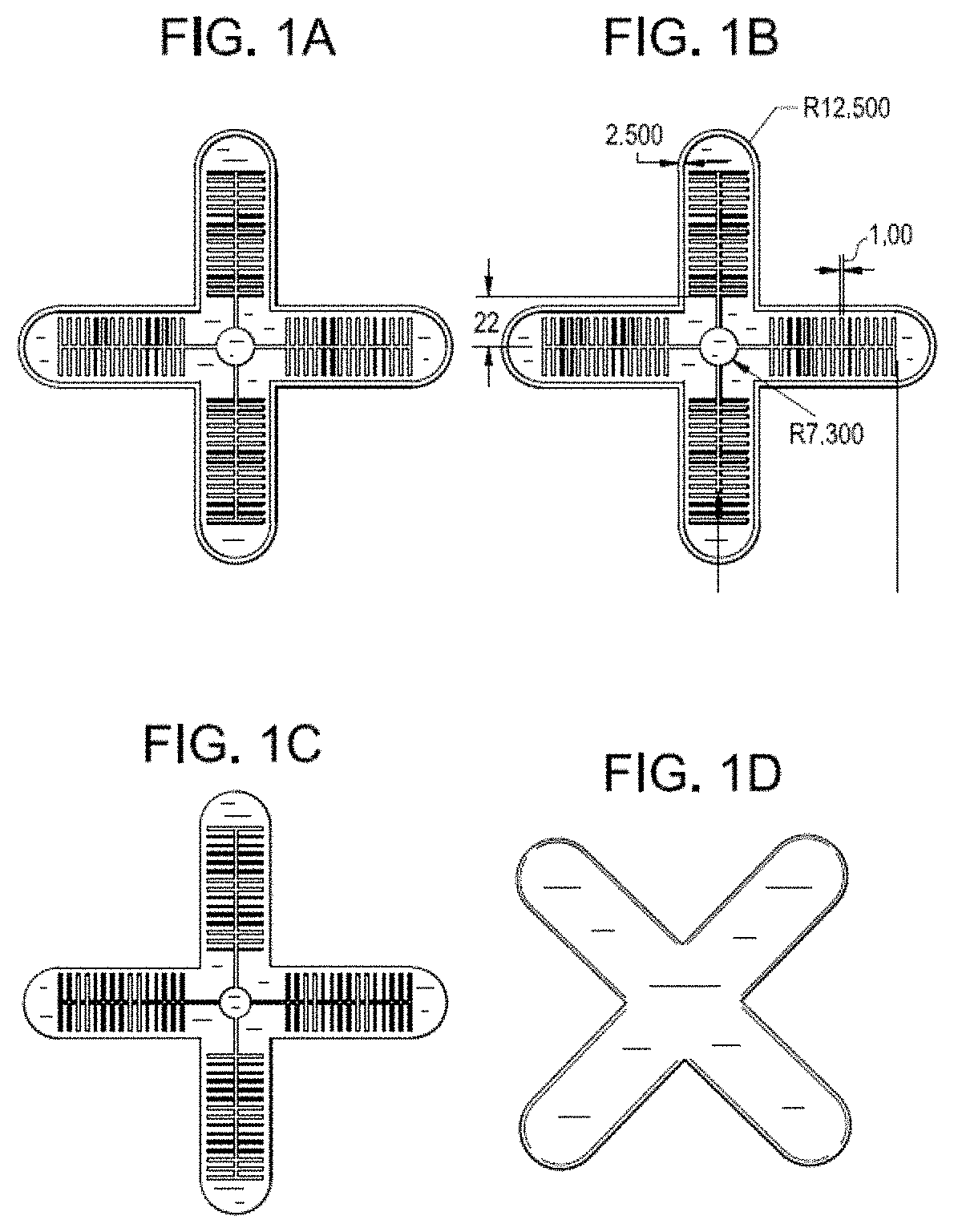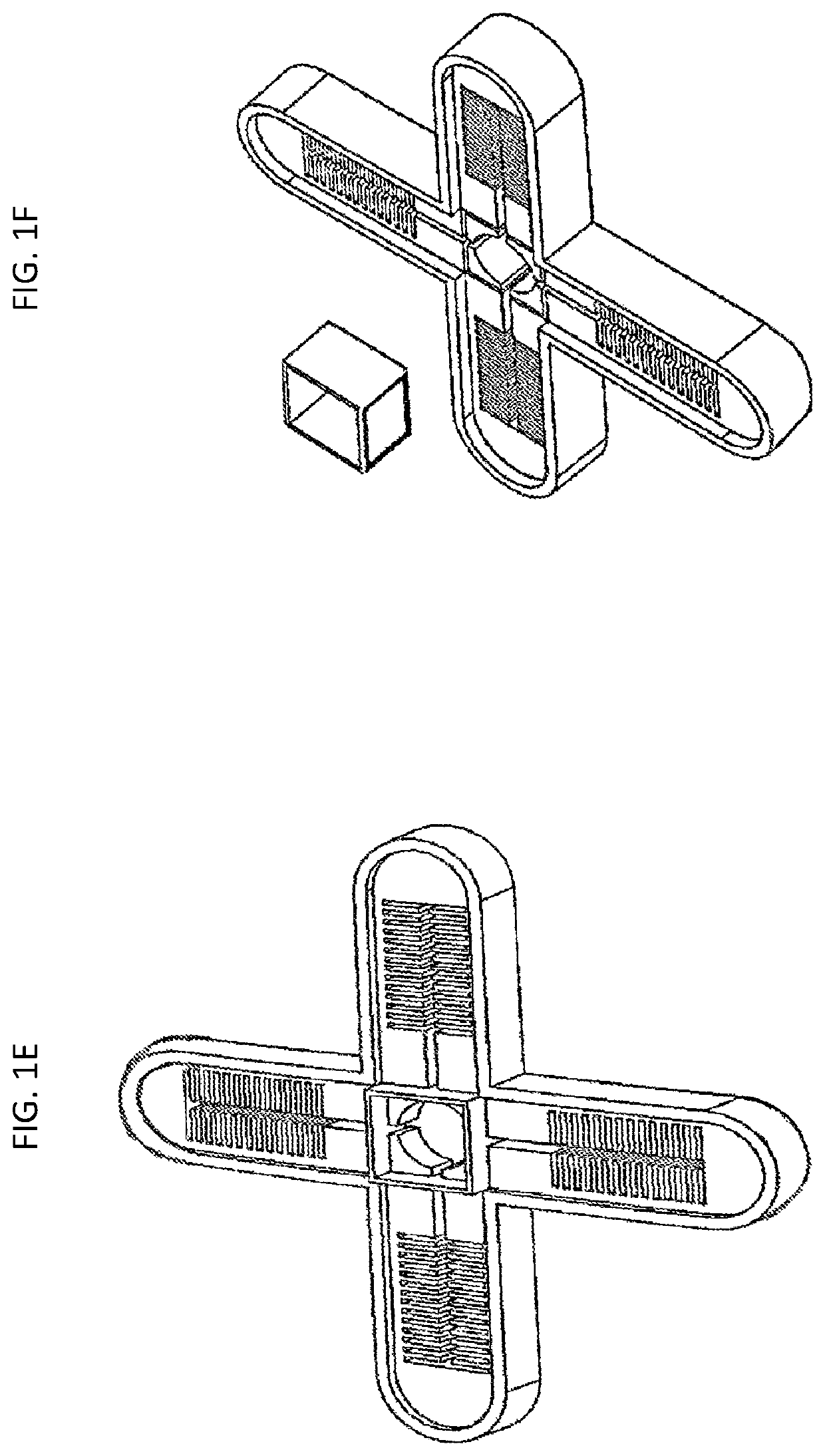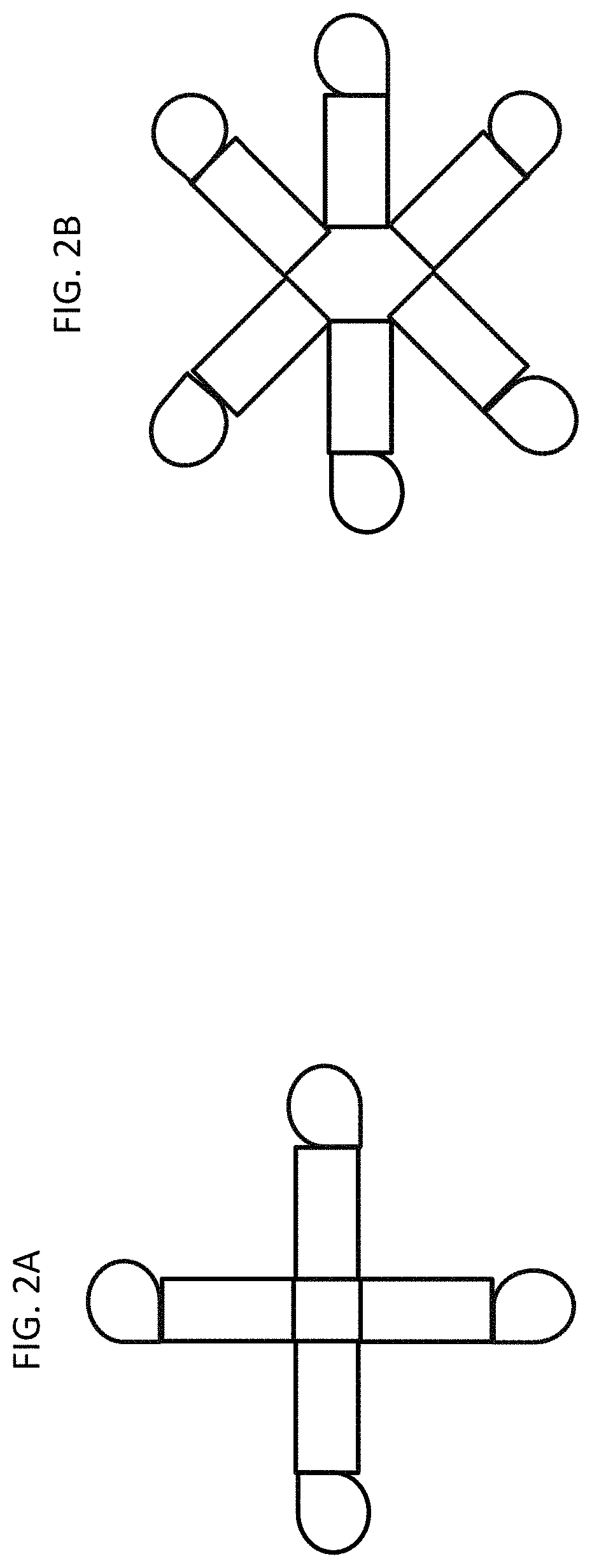Soft robotic assistive gripping device
a robotic and assistive technology, applied in the field of soft robotic assistive gripping devices, can solve the problems of neuropathy, reduced temperature and pain sensitivity, increased pain, increased needles, etc., and achieve the effect of increasing or decreasing the assistive gripping force and increasing or decreasing the gripping for
- Summary
- Abstract
- Description
- Claims
- Application Information
AI Technical Summary
Benefits of technology
Problems solved by technology
Method used
Image
Examples
example 1
and Using the Gripping Device
[0087]The concept of the gripper prototype developed is shown in FIG. 7. There are three main components to the design of the soft robotic gripper: 1) a physical structure made of external skin and internal air holes which can be inflated called the actuator, 2) a pressure source, such as air, that can inflate the physical structure to conform to the object, and 3) a component for sensing and providing feedback on the actuation (sensor and controller). The gripper can then be actuated open or closed through use of a switched air valve. In this design, three different sensors were used for temperature (TMP36), flex (Flex 2.2) and pressure (Tekscan A301) with an Arduino microprocessor to collect real time data. LED lights or LCD display can be used to show the measured values.
[0088]To build the soft robot, a 3D printed mold was created as shown in FIG. 1. Two different Silicone materials were tested: ECOFLEX® 00-30 (Smooth-On Inc, Macungie, Pa.) and ELASTO...
example 2
nearity
[0090]The three sensors used in this study were temperature (TMP36) for sensitivity, flex sensor (2.2) for conformability and the pressure sensor (FlexiForce A301) for grip ability evaluation. For the selection of the flex and pressure sensors, we used sensors that were flexible and can be potentially mounted directly on the soft robots and be able to flex with the soft robot. The first step was to study the individual sensors and their linearity in the range of operation. Each sensor was connected to the Arduino Uno processor to gather input and output values for the trend line (FIG. 10).
[0091]For the temperature sensor TMP36, we plotted the input temperature and the output voltage values (FIG. 3). Temperature was measured in ° C. and voltage in millivolts. TMP36 sensor has a value of 700 mV at 20° C. (typical room temperature). Body temperature is typically from 36-37.5° C. and the temperature study was conducted covering the range of 16-42° C. to evaluate the linearity of ...
example 3
tic Gripper Evaluation
[0093]Once the linearity of the sensors was established, the next step was to test them with the gripper. The gripper was made from ECOFLEX® 00-30. The soft gripper was tested with the sensors in the environment and changes in parameters were recorded over time to compare the soft robot data to that of actual temperature (FIG. 11). The actual temperature was measured in the range of 28-29.5° C., the hand in the range of 29-30.5° C., and soft gripper in the range of 26-27.5° C.
[0094]The graph in FIG. 11 shows the temperature profiles of actual temperature and temperature of the gripper and hand over time. To summarize the results, the gripper and actual temperature varied within 3 degrees of each other. Some temperature change is expected on touch due to heat transfer.
[0095]The experiment confirmed that the gripper temperature can be measured within 3 degrees of actual and can be used to detect too hot or too cold objects beyond the comfort range as selected. Th...
PUM
 Login to View More
Login to View More Abstract
Description
Claims
Application Information
 Login to View More
Login to View More - R&D
- Intellectual Property
- Life Sciences
- Materials
- Tech Scout
- Unparalleled Data Quality
- Higher Quality Content
- 60% Fewer Hallucinations
Browse by: Latest US Patents, China's latest patents, Technical Efficacy Thesaurus, Application Domain, Technology Topic, Popular Technical Reports.
© 2025 PatSnap. All rights reserved.Legal|Privacy policy|Modern Slavery Act Transparency Statement|Sitemap|About US| Contact US: help@patsnap.com



